| The early 1930s was a difficult time for the company, due to
the depression, which reached an all-time low in 1932, and the
emergence of a serious rival in the form of Bedford commercial
vehicles, launched by General Motors in 1931. Trade didn't start
to pick-up until 1933. Luckily Guy
continued to develop military vehicles, and was sustained by
many orders from the War Office. It was a worrying time for the
country due to the goings-on in Germany as a result of the rise
to power of Adolf Hitler and the National Socialist Party. The
1930 Road Traffic Act greatly influenced the construction of
commercial vehicles. A 30 mph. speed limit was imposed on all
goods vehicles with an unladen weight of up to 50 cwt. Vehicles
weighing more were not allowed to exceed 20 mph. This encouraged
the development of lighter vehicles. |

The first trolley bus in South Africa, a
Guy 'BTX'. |
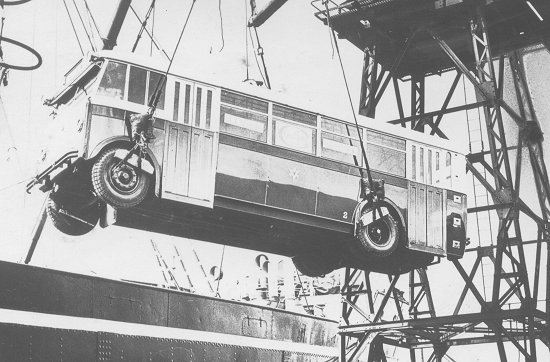 |
One of the many Guy
trolley buses that were exported, is loaded onto a ship.
It appears to be a 32- seater, bound for
Japan. |

An early 1930s coach operated by Tours & Transport,
King Street, Wolverhampton.
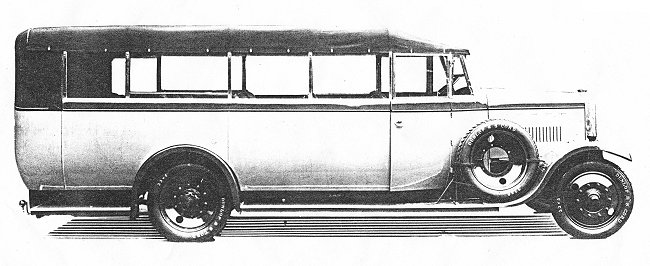
Guy 26-seater.
 |
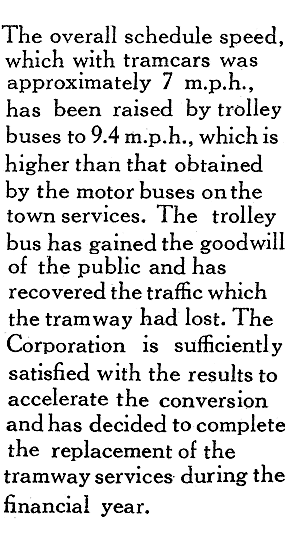 |

From 'The Commercial Motor',
29th September, 1933. Between 1932 and 1937 Derby
Corporation purchased 76 'BTX' trolley buses from
Guy, becoming one of Guy's best customers. |
|
| In 1933 Guy launched the 'Arab' bus chassis, the first
bus chassis designed for use with a diesel engine. It was
designed for use with the Gardner 'LW' range of engines, and had
vacuum-hydraulic brakes. Although sales were not very good in
the 1930s, when around 60 were built, later versions of the
design would sell in extremely large numbers, and allow the
company to flourish until well into the 1950s |
|
 |
| One of the last pre-war 'Arab'
buses to leave the factory with the wartime seating
arrangement that left room for more standing passengers. |
|
An additional feature was incorporated in
the Guy 4-wheel double-deck trolley buses operated by
Wolverhampton Corporation.
The vehicles were equipped with two 24 volt
batteries, which were connected in parallel for lighting, but if
required for manoeuvring, they were then connected in series
to give 48 volts. This was sufficient to power the
vehicles for a distance of 2 or 3 miles, without
the use of the overhead power lines.
This feature had many advantages; for
instance, if a driver wanted to take his vehicle into the
depot, or manoeuvre in the depot, it was possible to do so
without the assistance of the overhead wires.
|
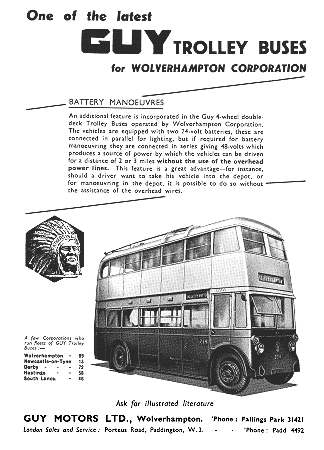
An advert from 1936. |
| The development of the all-important Guy military vehicles
continued with the launch of 6-wheel and 8-wheel driven vehicles
which could go almost anywhere, even across a 6 ft. wide trench,
without falling into it. In 1935 Guy Motors was invited to take part in army trials
at Llangollen. The company submitted the 'Ant', a new 4-wheeled
vehicle with a payload of 15 cwt., and a short wheelbase. After
performing well at the trial, Guy received an order for 150.
After receiving the order from the Government, Guy Motors began
to concentrate on the production of military vehicles. By 1938
the production of vehicles for the civilian market completely
ceased when Guy relied exclusively on Government contracts. It
would be some years before the production of vehicles for the
civilian market recommenced. |
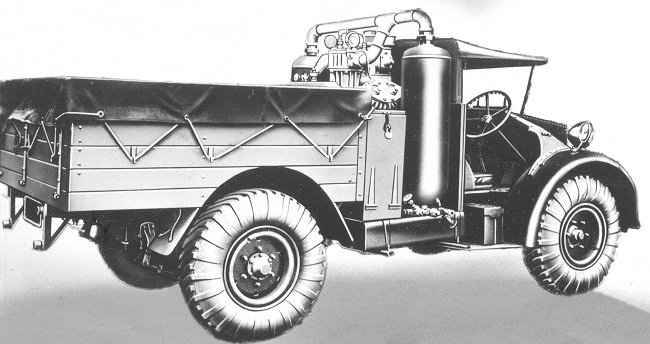
A Guy 'Ant' fitted with a compressor unit.
 |
Research and development was
continuously carried out at the works to ensure that the
company's products were technically advanced.
This photograph shows a corner of the
laboratory. |
| In 1938 Guy Motors produced the first British rear-engined,
4-wheel drive, armoured car, as a development of the 'Quad Ant'.
It had a hull and turret of bullet-proof, homogeneous hard
unmachinable plate, which was welded instead of riveted
together. Until this time it was assumed that it was impossible
to weld the plate.
Welded construction had many advantages. It reduced the
number of casualties resulting from 'splash', and rivet
heads flying around the inside of the tank. It reduced the price
of material for each tank by eliminating the machining of the
plate. The vehicle was far more waterproof, and could
enter water of a greater depth.
The Government technical department advised that it was
impossible to commercially weld the material, and so Guy offered
to weld the first batch ordered, and if unsuccessful, to stand
the cost. The vehicles were welded, and on examination by the
military, the technique was found to work extremely well. As a
result it became standard practice and saved the country an
estimated 100 million pounds.
The new development was put at the government's disposal, for
the duration of the war, and Guy received an award from the
Royal Commission for developing the technique. |
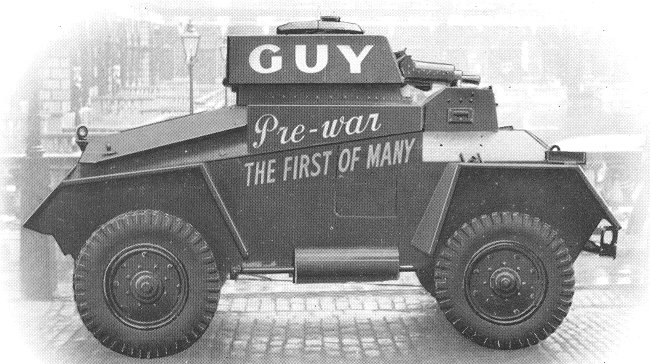
A Guy armoured car.
 |
|
 |
|
 |
Return to
The Late 1920s |
|
Return
to the
beginning |
|
Proceed to
World War 2 |
|